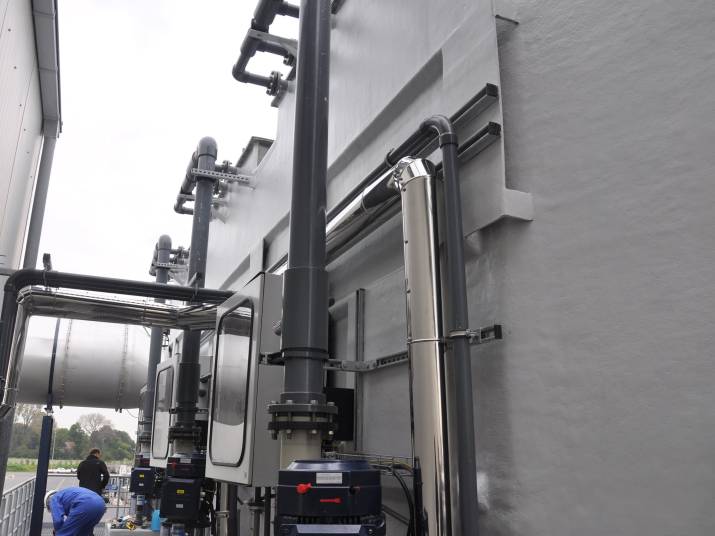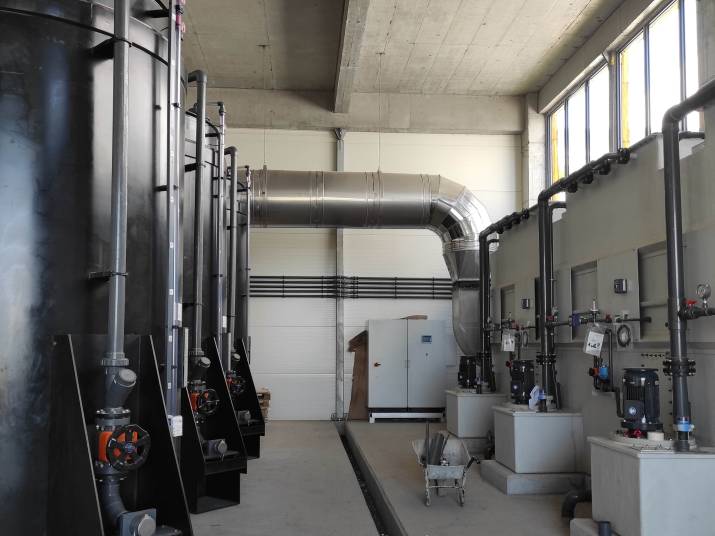for animal processing

for animal processing
Challenges
in animal processing
The field of animal processing is very diverse. It starts with the keeping of animals in stables or enclosures. The animals and their food produce species-specific smells during storage. Animal excrement and urine and their further processing are among the most common and strongest odor emissions. After that, slaughterhouses are one of the critical sources of bad smells. Here too, the accumulation of excrement and urine is an important factor, but in addition there is usually the utilization of the residual materials, which are thermally processed into protein and fat (rendering). Very unpleasant smells arise here due to the process.

Our solution
Depending on the origin of the exhaust air, different types of exhaust air purification systems can be used. These include scrubbers, biofilters and activated carbon filters. A combination of technologies is also possible. Which system is used here depends on the conditions on site (space, desired cleaning performance) as well as the origin and type of exhaust air (stables, manure and urine storage, rendering). We would be happy to advise you!
Every cleaning task is unique. That’s why we take the utmost care to clarify your specific requirements and parameters in order to find the most space-saving, favourable and economical solution.
Our processes in project management, production, service and assembly are certified. We select our suppliers carefully and focus on long-term partnerships. This enables us to guarantee the reliable and high quality of our system as well as the purchased parts and external services.
We provide you with expert advice and support throughout the entire project. From checking the functionality and assessing the overall system to regular maintenance – we ensure that your system always runs optimally.
We manufacture our products from GRP. Glass fibre reinforced plastics (GRP) are made from reinforcing materials (glass fibre mats, fabrics, etc.) that are impregnated with various resins and chemical additives. This has many advantages: low weight with high resistance, non-porous and easy-to-clean surfaces, good thermal insulation values and low thermal expansion.
The optimisation of production processes, the use of energy-efficient machines and systems and the implementation of intelligent control and monitoring systems can significantly reduce energy costs. The economical use of resources such as water, raw materials and packaging materials also helps to conserve resources and reduce environmental pollution. We attach great importance to this, both in our own production and in the planning of your systems.
Concepts implemented worldwide
for animal processing

Meat processing in Liechtenstein
The odorous exhaust air (2,000 m³/h) from the wastewater pretreatment process at a meat processing plant is cleaned in a biofilter with a pre-scrubber. The exhaust air is extracted from the various exhaust air sources via an exhaust air line.

Carcass processing in Germany
At a carcass processing company in Germany, around 88,655 m³/h of odorous exhaust air is extracted and cleaned from the hydrolysis and production hall and from the raw materials hall. At the same time, another 80,000 m³/h of separate exhaust air is extracted and cleaned. The source exhaust air is pre-cleaned using a small counter-current scrubber. The collected exhaust air then goes into several biofilters via a three-stage cross-current scrubber.

Carcass processing in Romania
The odorous air from the processes (30,000 m³/h) and buildings (130,000 m³/h) of a carcass disposal plant is cleaned by a three-stage chemical cross-flow scrubber and a biofilter with an integrated pre-scrubber. The three-stage cross-flow scrubber is positioned in front of the biofilter and only pre-cleans the odorous air from the processes, while the biofilter post-cleans all the exhaust air.